(1) Basic Principles
Electrical discharge machining (EDM) is a special machining method that uses the electrical erosion generated by the pulse discharge between the two electrodes immersed in the working fluid to erode conductive materials. It is also known as electrical discharge machining or electrical erosion machining, abbreviated as EDM.
Electrical discharge machining is suitable for processing complex components such as precision small cavities, narrow slits, grooves, and corners. When the tool is difficult to reach complex surfaces, in areas where deep cutting is required and where the aspect ratio is particularly high, the electrical discharge machining process is superior to milling machining. For the processing of high-tech parts, re discharge of milling electrodes can improve the success rate, and compared to high and expensive tool costs, discharge machining is more suitable. In addition, in areas where electrical discharge machining is required, electrical discharge machining is used to provide a spark pattern surface. Today, with the rapid development of high-speed milling, the development space of electric discharge machining has been squeezed to a certain extent. At the same time, high-speed milling has also brought greater technological progress to electrical discharge machining. For example, using high-speed milling to manufacture electrodes greatly reduces the number of electrode designs due to the implementation of narrow area machining and high-quality surface results. In addition, using high-speed milling to manufacture electrodes can also improve production efficiency to a new level and ensure high precision of electrodes, thereby improving the accuracy of electrical discharge machining.
If most of the machining of the cavity is completed by high-speed milling, electrical discharge machining is only used as an auxiliary means to clean corners and trim edges, so that the allowance is more uniform and less
(2) Basic equipment: Electric discharge machining machine tool.
(3) Main features
Capable of processing materials and complex shaped workpieces that are difficult to cut with ordinary cutting methods; No cutting force during machining; No defects such as burrs, knife marks, grooves, etc; The tool electrode material does not need to be harder than the workpiece material; Directly using electrical energy for processing, facilitating automation; The surface undergoes a metamorphic layer after processing, which needs to be further removed in some applications; The purification of working fluid and the treatment of smoke pollution generated during processing are relatively troublesome.
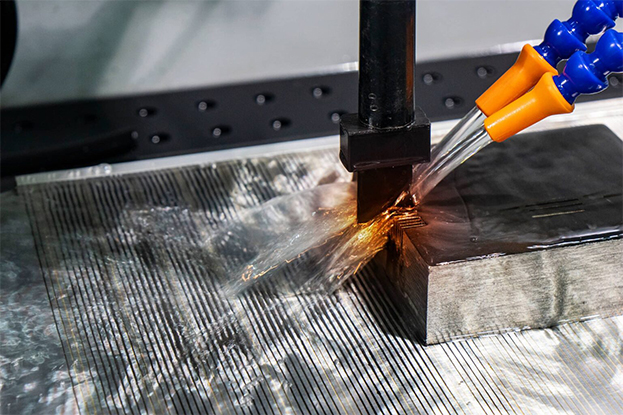
Electrical discharge machining has the following characteristics:
Can process any conductive material with high strength, high hardness, high toughness, high brittleness, and high purity; There is no obvious mechanical force during processing, suitable for processing low stiffness workpieces and micro structures: pulse parameters can be adjusted according to needs, and rough machining, semi precision machining, and precision machining can be carried out on the same machine tool; The pits on the surface after electrical discharge machining are beneficial for oil storage and noise reduction; The production efficiency is lower than that of cutting machining; During the discharge process, some energy is consumed on the tool electrode, resulting in electrode loss and affecting the forming accuracy.
(4) Scope of use
Processing molds and parts with complex shaped holes and cavities; Processing various hard and brittle materials such as hard alloys and quenched steel; Processing deep and fine holes, irregular holes, deep grooves, narrow slits, and cutting thin sheets; Process various forming tools, templates, thread ring gauges, and other tools and measuring tools.
Electrical discharge machining must meet three conditions
1. Pulse power supply must be used
2. An automatic feed adjustment device must be used to maintain a small discharge gap between the tool electrode and the workpiece electrode
Spark discharge must be carried out in a liquid medium with a certain insulation strength (10-107 Ω· m).
Not all mold steels can undergo mirror EDM machining
Some mold steels can easily achieve a mirror effect through electrical discharge machining, while others cannot achieve a mirror effect no matter what. At the same time, the hardness of the mold steel is higher, and the effect of EDM mirror machining is better. Please refer to the table below for various materials and mirror processing properties.
| Grade | Material | Mirror performance |
| A | SKD61 | very good |
| STAVAX (S136) | very good | |
| PD555 | very good | |
| NAK80 | very good | |
| 718H | very good | |
| B | SKS3 | good |
| SKH9 | good | |
| HPM38 | good | |
| S55C | good | |
| H13 | good | |
| XW10 | not good enough | |
| C | SKD11 | bad |
| NAK55 | bad | |
| HPM1 | bad | |
| DH2F | bad | |
| D | Bs | Pear peel surface |
| Al | Pear peel surface | |
| superhard alloy | Pear peel surface |
(1) Basic Principles
Using continuously moving fine metal wires (called electrode wires) as electrodes, the workpiece is subjected to pulse spark discharge to remove metal and cut into shape. The English name is Wire cut Electrical Discharge Machining, abbreviated as WEDM, also known as wire cutting.
(2) Basic equipment: Electric discharge wire cutting machine tool.
(3) Main features
In addition to the basic characteristics of electrical discharge machining, wire cutting with electric discharge also has some other characteristics:
① Without the need to manufacture complex shaped tool electrodes, any two-dimensional surface with a straight line as the generatrix can be machined;
② Can cut narrow gaps of about 0.05 millimeters;
③ Not all excess materials are processed into scrap during processing, which improves the utilization rate of energy and materials;
④ In low-speed wire EDM machining where the electrode wire is not recycled, the continuous updating of the electrode wire is beneficial for improving machining accuracy and reducing surface roughness;
⑤ The cutting efficiency that can be achieved by electric discharge wire cutting is generally 20-60 mm2/min, with a maximum of 300 mm2/min; The machining accuracy is generally between ± 0.01 and ± 0.02 millimeters, with a maximum of ± 0.004 millimeters; The surface roughness is generally Ra2.5 to 1.25 microns, with a maximum of Ra0.63 microns; The cutting thickness is generally 40-60 millimeters, with a maximum thickness of up to 600 millimeters.
(4) Scope of use
Mainly used for processing: various complex and precise small workpieces, such as convex, concave, convex and concave molds of punching dies, fixed plates, discharge plates, etc; Metal electrodes used for forming tools, templates, and electrical discharge machining; Various micro grooves, narrow slits, arbitrary curves, etc. It has outstanding advantages such as small machining allowance, high machining accuracy, short production cycle, and low manufacturing cost, and has been widely used in production. Currently, more than 60% of the total number of electric discharge wire cutting machines in China and abroad have been used.
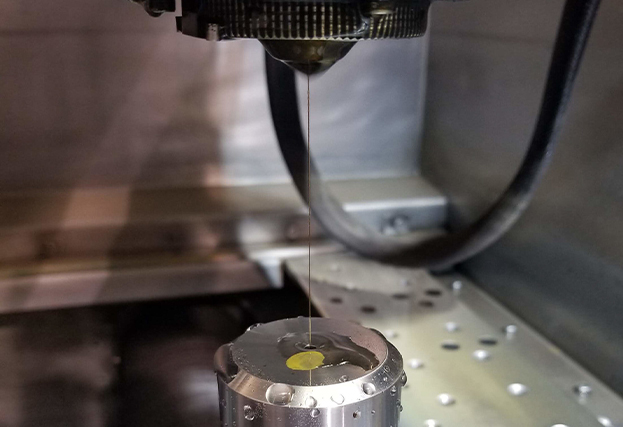
Electric discharge wire cutting is a technology for machining workpiece dimensions. Under certain equipment conditions, a reasonable formulation of processing technology routes is an important link in ensuring the quality of workpiece processing.
The process of machining molds or parts using electric discharge wire cutting can generally be divided into the following steps.
Analyze and review the drawings:
The analysis pattern of slow wire cutting is the decisive first step in ensuring the machining quality and comprehensive technical indicators of the workpiece. Taking the punching die as an example, when digesting the pattern, the first step is to select the workpiece pattern that cannot or is not easy to process with electric discharge wire cutting. There are generally the following types:
1. Workpieces with high requirements for surface roughness and dimensional accuracy that cannot be manually ground after cutting;
2. Workpieces with narrow slits smaller than the diameter of the electrode wire plus discharge gap, or workpieces with rounded corners formed by the discharge gap of the dead electrode plate and the wellhead frame are not allowed at the corners of the figure;
3. Non conductive materials;
4. Parts with a thickness exceeding the span of the wire frame;
5. Workpieces with processing length exceeding x and effective stroke length of y drag plate, and high precision requirements.
Under the conditions of meeting the requirements of wire cutting processing technology, careful consideration should be given to surface roughness, dimensional accuracy, workpiece thickness, workpiece material, size, fit clearance, and thickness of stamped parts.
Programming considerations:
1. Determination of die clearance and transition circle radius
Reasonably determine the clearance of the stamping die. The reasonable selection of die clearance is one of the key factors related to the lifespan of the mold and the size of burrs in the stamped parts. The clearance between different materials for stamping dies is generally selected within the following range:
Soft punching materials, such as copper, soft aluminum, semi hard aluminum, glued wood boards, red cardboard, mica sheets, etc., can have a gap of 10% -15% of the punching thickness between the convex and concave molds.
Hard punching materials, such as iron sheets, steel sheets, silicon steel sheets, etc., can have a clearance of 15-20% of the punching thickness between the convex and concave molds.
This is the actual experience data of some wire cutting punching dies, which are smaller than the internationally popular large gap punching dies. Because the surface of the workpiece processed by wire cutting has a brittle and loose melting layer, the larger the machining electrical parameters, the worse the surface roughness of the workpiece, and the thicker the melting layer. As the number of mold strokes increases, this brittle and loose surface will gradually wear off, causing the mold gap to gradually increase.
Reasonably determine the radius of the transition circle. In order to improve the service life of general cold stamping molds, stamping mold suppliers suggest incorporating transition circles should be added at the intersection of lines, lines, and circles, especially at small angles. The size of the transition circle can be considered based on the thickness of the punching material, the shape of the mold, the required lifespan, and the technical conditions of the punching part. As the punching part becomes thicker, the transition circle can also increase accordingly. Generally, it can be selected within the range of 0.1-0.5mm.
For transition circles with thin punching materials, small mold fit gaps, and no allowance for larger punching parts, in order to obtain good clearance between convex and concave molds, a transition circle is generally added at the corner of the shape. Because the machining trajectory of the electrode wire will naturally produce a transition circle with a radius equal to the radius of the electrode wire plus the single-sided discharge gap at the inner corner.
2. Calculate and write machining programs
Quick wire cutting
When programming, it is necessary to choose a reasonable clamping position based on the situation of ingredients, and at the same time determine a reasonable starting point and cutting route.
The starting point of cutting should be taken at the corner of the shape or in areas where the protrusion is easily removed.
The cutting route is mainly based on the principle of preventing or reducing mold deformation. Generally, it should be considered to make the shape near the clamping side easy to cut at the end.
3. Program paper tape and proofreading paper tape for threading and processing
After completing the production of the paper tape according to the program sheet, make sure to proofread the program sheet and the produced paper tape one by one. Use the proofread paper tape to input the program into the controller before attempting to cut the sample. Simple and confident workpieces can be directly processed. For molds with high dimensional accuracy requirements and small clearance between convex and concave molds, thin materials must be used for trial cutting. The accuracy and clearance of the cut parts can be checked. If it is found that the requirements are not met, it should be analyzed in a timely manner to identify the problem and modify the program until it is qualified before the mold can be officially processed. This step is an important step in avoiding workpiece scrap.
According to the actual situation, the program can also be input directly from the keyboard or transmitted directly from the programming machine to the controller.
3. Electro Chemical Machining
(1) Basic Principles
A process method called electrochemical machining, which is based on the principle of anodic dissolution during the electrolysis process and utilizes a formed cathode to shape and size workpieces to a certain shape and size.
(2) Scope of use
Electrochemical machining has significant advantages in processing difficult to machine materials, complex shapes, or thin-walled parts. Electrochemical machining has been widely applied, such as barrel rifling, blades, integral impellers, molds, irregular holes and parts, chamfering and deburring. And in the processing of many parts, electrochemical machining technology has played an important and even irreplaceable role.
(3) Advantages
Wide processing range. Electrochemical machining can process almost all conductive materials without being limited by their mechanical and physical properties such as strength, hardness, and toughness. The metallographic structure of the material remains basically unchanged after processing. It is commonly used for processing difficult to machine materials such as hard alloys, high-temperature alloys, quenched steel, stainless steel, etc.
(4) Limitations
Low processing accuracy and stability; The processing cost is higher, and the smaller the batch size, the higher the additional cost per piece.
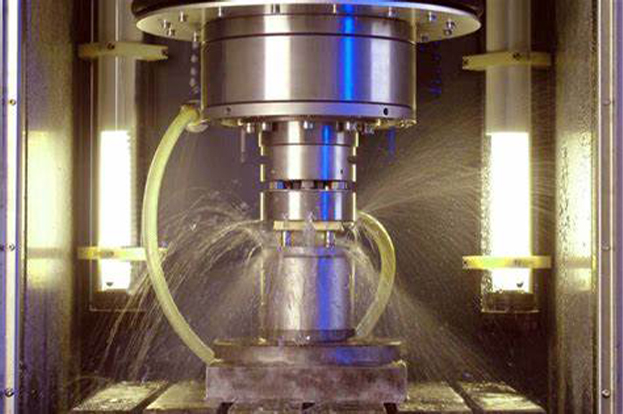
4. Laser processing
(1) Basic Principles
Laser processing is the process of using the energy of light to achieve a high energy density at the focal point after being focused by a lens. It melts or vaporizes the material in a very small amount of time and is eroded off, achieving processing.
(2) Main features
Laser processing technology has advantages such as low material waste, significant cost effects in large-scale production, and strong adaptability to processing objects. In Europe, laser technology is commonly used for welding special materials such as high-end car casings and bases, aircraft wings, and spacecraft bodies.
(3) Scope of use
Laser processing, as the most commonly used application of laser systems, mainly includes technologies such as laser welding, laser cutting, surface modification, laser marking, laser drilling, micro processing and photochemical deposition, stereolithography, laser etching, etc.
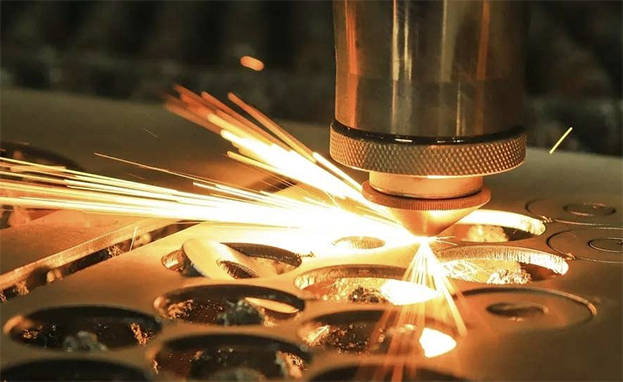
5. Electron beam processing
(1) Basic Principles
Electron beam processing is the processing of materials using the thermal or ionization effects of high-energy converging electron beams.
(2) Main features
High energy density, strong penetration ability, wide range of one-time penetration depth, large weld width ratio, fast welding speed, small heat affected zone, and small working deformation.
(3) Scope of use
The material range of electron beam processing is wide, and the processing area can be extremely small; The processing accuracy can reach the nanometer level, achieving molecular or atomic processing; High productivity; The pollution generated by processing is small, but the cost of processing equipment is high; It can process micropores, narrow slits, etc., and can also be used for welding and fine lithography. Vacuum electron beam welding bridge shell technology is the main application of electron beam processing in the automotive manufacturing industry.
6. Ion Beam Machining
(1) Basic Principles
Ion beam processing is the process of accelerating and focusing the ion flow generated by the ion source under vacuum to reach the surface of the workpiece for processing.
(2) Main features
Due to the precise control of ion current density and ion energy, the machining effect can be precisely controlled, achieving ultra precision machining at the nanoscale and even molecular and atomic levels. During ion beam processing, the pollution generated is small, the processing stress and deformation are minimal, and the adaptability to the processed material is strong, but the processing cost is high.
(3) Scope of use
Ion beam processing can be divided into two types based on its purpose: etching and coating.
1) Etching processing
Ion etching is used to process grooves on gyroscope air bearings and dynamic pressure motors, with high resolution, accuracy, and good repeatability. Another aspect of ion beam etching applications is the etching of high-precision graphics, such as electronic components such as integrated circuits, optoelectronic devices, and optoelectronic devices. Ion beam etching is also applied in thinning materials and making penetrating electron microscope specimens.
2) Ion beam coating processing
There are two forms of ion beam coating processing: sputtering deposition and ion plating. Ion plating has a wide range of materials that can be plated, and metal or non-metal thin films can be plated on both metal and non-metal surfaces. Various alloys, compounds, or certain synthetic materials, semiconductor materials, and high melting point materials can also be plated.
Ion beam coating technology can be used for coating lubricating films, heat-resistant films, wear-resistant films, decorative films, and electrical films.
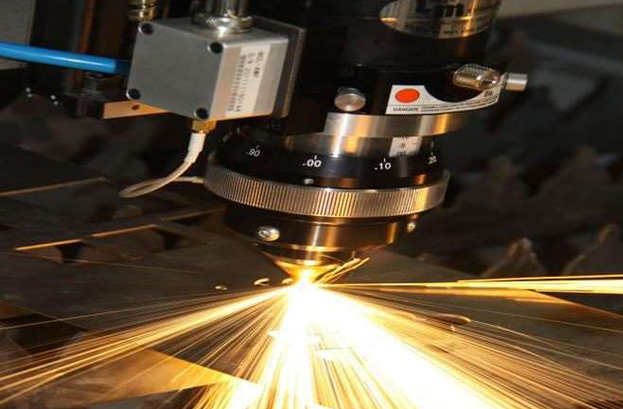
7. Plasma arc machining
(1) Basic Principles
Plasma arc machining is a special processing method that utilizes the thermal energy of plasma arcs to cut, weld, and spray metal or non-metal materials.
(2) Main features
1) Micro beam plasma arc welding can weld foils and thin plates;
2) Having a small hole effect, it can effectively achieve single-sided welding and double-sided free forming;
3) Plasma arc has a high energy density, high arc column temperature, and strong penetration ability. Steel with a thickness of 10-12mm does not require bevels and can be welded through and formed on both sides in one go. It has fast welding speed, high productivity, and small stress deformation;
4) The equipment is relatively complex and consumes a large amount of gas, making it only suitable for indoor welding.
(3) Scope of use
Widely used in industrial production, especially in the welding of copper and copper alloys, titanium and titanium alloys, alloy steel, stainless steel, molybdenum and other metals used in military and cutting-edge industrial technologies such as aviation and aerospace, such as titanium alloy missile shells and some thin-walled containers on aircraft.
8. Ultrasonic machining
(1) Basic Principles
Ultrasonic machining is a special type of machining that uses ultrasonic frequency as a tool for small amplitude vibration, and through the impact of abrasive free in the liquid between it and the workpiece on the machined surface, gradually shatters the surface of the workpiece material. It is abbreviated as USM in English. Ultrasonic machining is commonly used for perforation, cutting, welding, nesting, and polishing.
(2) Main features
It can process any material, especially suitable for processing various hard and brittle non-conductive materials. It has high machining accuracy for workpieces, good surface quality, but low productivity.
(3) Scope of use
Ultrasonic machining is mainly used for drilling (including round holes, irregular holes, and curved holes), cutting, slotting, nesting, carving, batch deburring of small parts, mold surface ultrasonic polishing, and grinding wheel dressing of various hard and brittle materials, such as glass, quartz, ceramics, silicon, germanium, ferrite, gemstones, and jade.
9. Chemical processing
(1) Basic Principles
Chemical Etching is a special machining process that utilizes the corrosive dissolution effect of acid, alkali, or salt solutions on workpiece materials to obtain the desired shape, size, or surface condition of the workpiece.
(2) Main features
1) Can process any metal material that can be cut without being limited by hardness, strength, and other properties;
2) Suitable for large-scale processing and capable of processing multiple parts simultaneously;
3) No stress, cracks, or burrs are generated, and the surface roughness reaches Ra1.25-2.5 μ M;
4) Easy to operate;
5) Not suitable for processing narrow grooves and holes;
6) It is not advisable to eliminate defects such as surface unevenness and scratches.
(3) Scope of use
Suitable for large-area thickness reduction processing; Suitable for machining complex holes on thin-walled parts.